Session Data
- Date: 10/1/2024
- Time: 20:44 – 00:15 UT
- Seeing: II. Good – Slight
- Transparency: II. Clear with some cloud
- Temp: 0 C,
- Air Pressure: 1030mb,
- Humidity: 84%,
- Dew Point: -2.2C,
- Wind Speed: 7mph
- Average FWHM: 3.34
- Average SQM: 20.16 magn/arcsec^2
Scope: Altair 250mm RC f/5.3 Camera: ZWO ASI 183MM Pro, No Filter. Dark subtracted and Flat fielded.
Session Notes:
All images are North up and East to the left. Click the image for full size versions.
NGC628, M74,
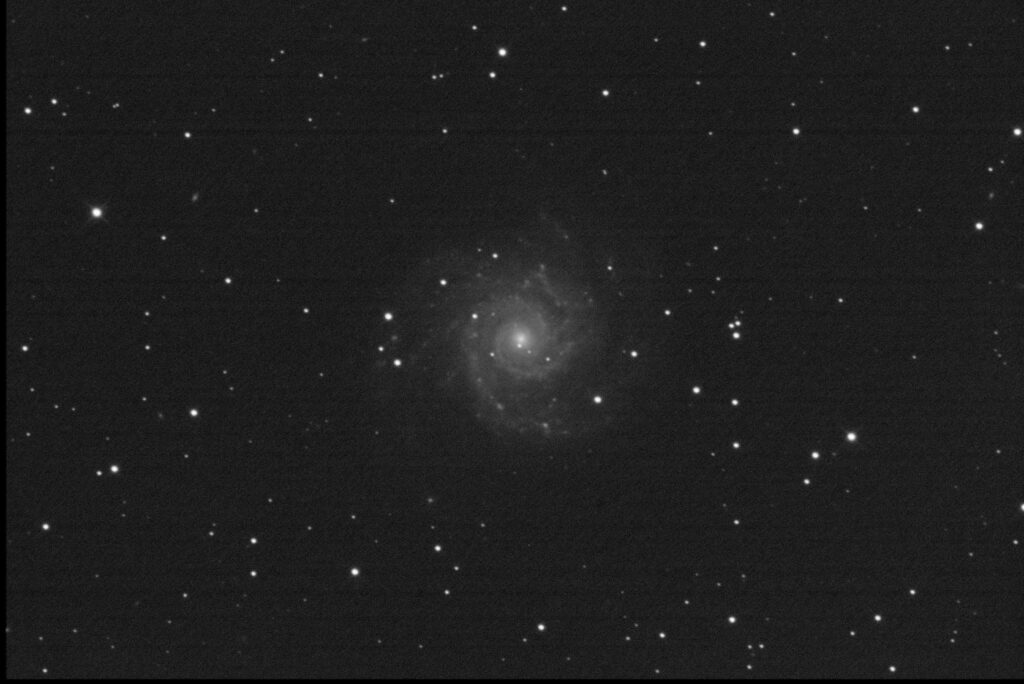
Last time I looked at this was way back in September of 2013 and was made visually with the same scope but with a range of eyepieces ranging from the 18mm UWA to the Delos 14mm.
The logged observation then read….
Going to the Altair Astro 250mm, Delos 14mm, 145 X, 29.8′ It does actually look more like a very faint Globular Cluster, where the brighter area outside of the brighter core looks to contain lots of unresolved stars. The core is dense but not bright enough to look stellar.
Now with EAA you wonder how you would think this looked more like a globular cluster. The core is stellar and just offset from a 15.6 mag star to the South. You see two spiral arms coming off of it, which then then become three, then four. You can see many HII star forming regions in the arms, most of which seems to get brighter the further out you go. I estimate the diameter to be just over 8.5’
Total integration 390 sec
NGC2022, HT6a
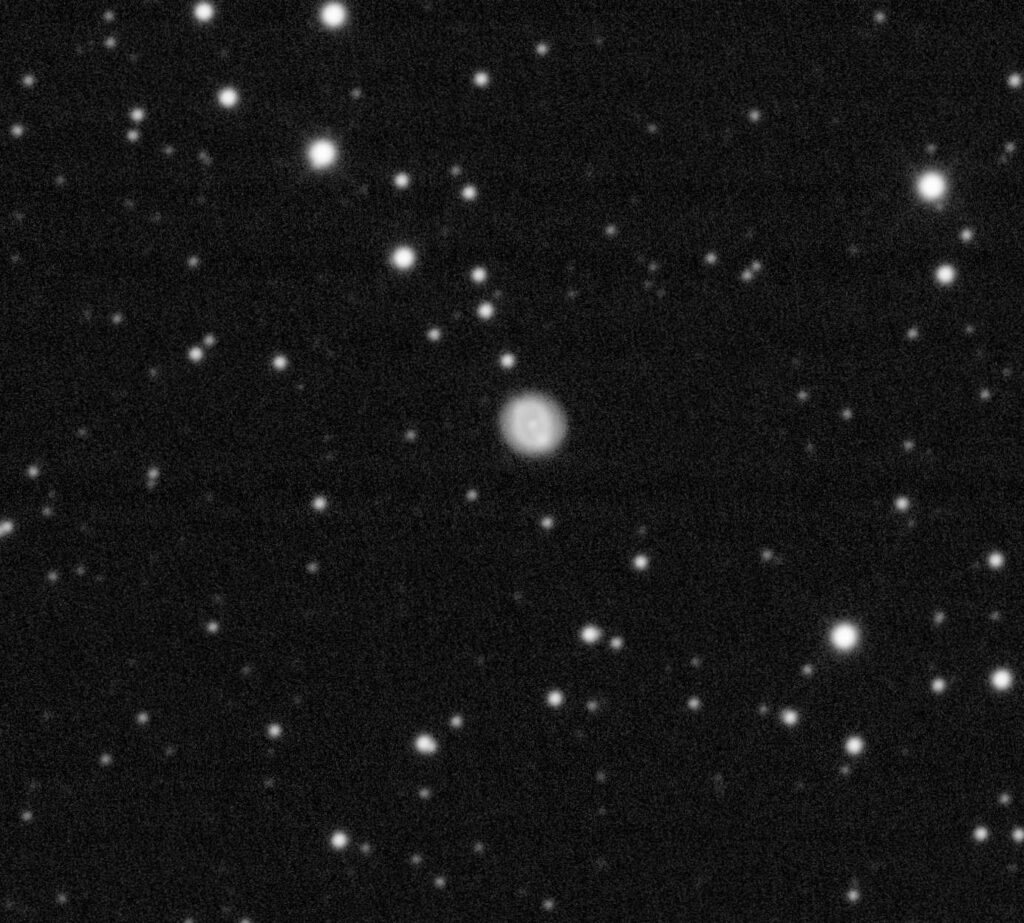
This is another of those really small PN. Sitting at the end of a line of 5 14.5 mag stars this little PN has a diameter of about 30”
There is a bright stellar core surrounded but a darker outer ring, which is slightly oval. Outside of that is a brighter ring which looks more of a square oval running roughly North/South. Outside of that is a darker ring. This is almost circular.
There appears to be a bright patch on the Southwesterly side of the brighter inner ring.
Total integration 300 sec
NGC1514, HT5a
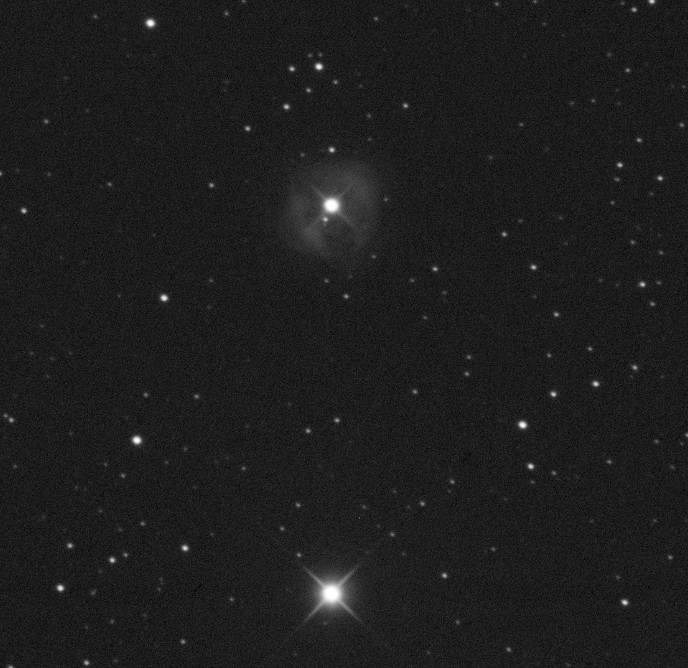
Quite a large small planetary with a diameter of 2.5’. The really bright 9.6 mag star at the centre has diffraction spikes and this seems to have cleared all of the dust and gas from its immediate surroundings. This clearing is not symmetrical though and it cuts through the illuminated ring at the Southern edge.
At the East and South, the outer ring is slightly lighter than the rest and if you look closely at the Southeast there is a faint little ear of nebulosity sticking out of the main ring. There is another of these to the Northwest, so it looks like there are two rings both with different orientations.
Total integration 405 sec
NGC2163, HT35
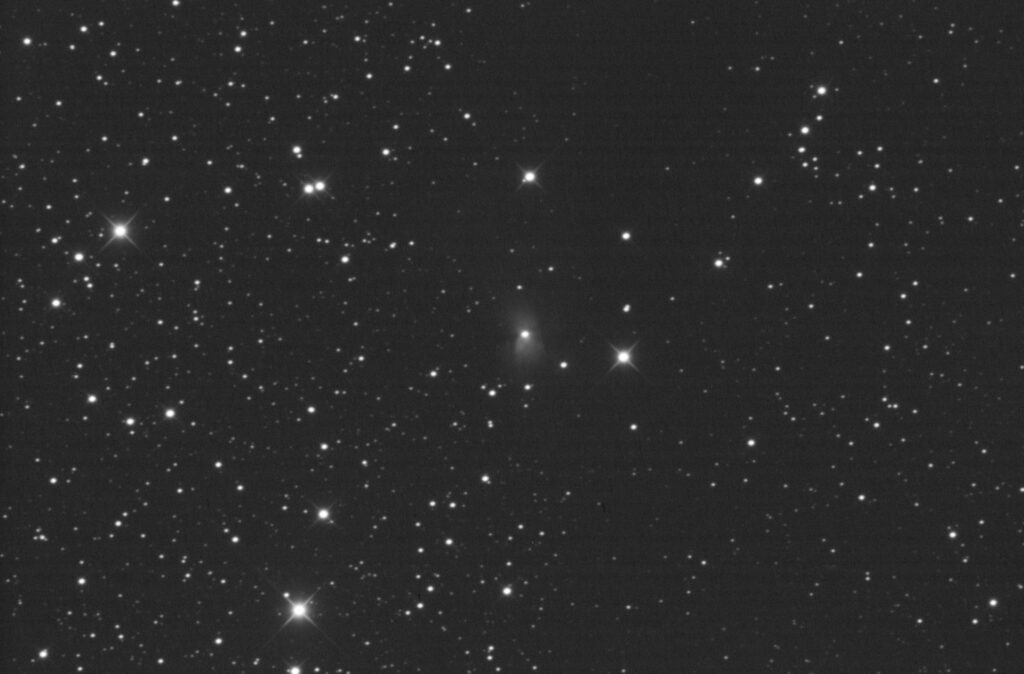
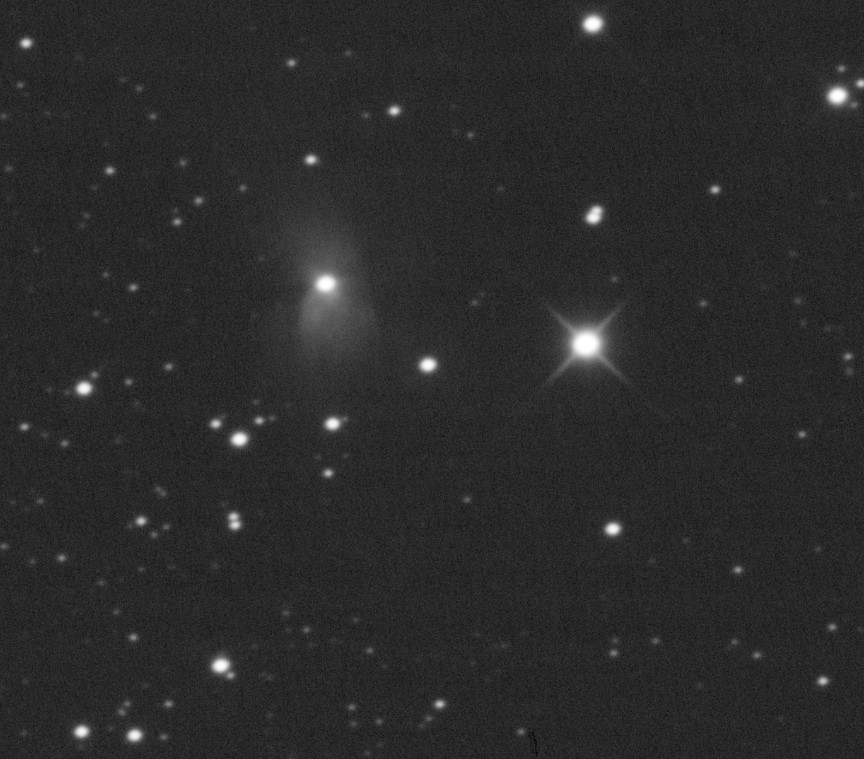
Looking at the overall frame, the first thing you notice is the very large and wide dust lane running North/South. It looks a little like a sand timer – wider at both ends and pinched in the middle.
The nebula itself is about 2.6’ long. Breaking it into two halves is a shallow V shaped dark dust lane. Think of a butterfly shape when viewed from above. At the centre is a bright 11.8mag star
Total integration 420 sec
NGC1976, M42
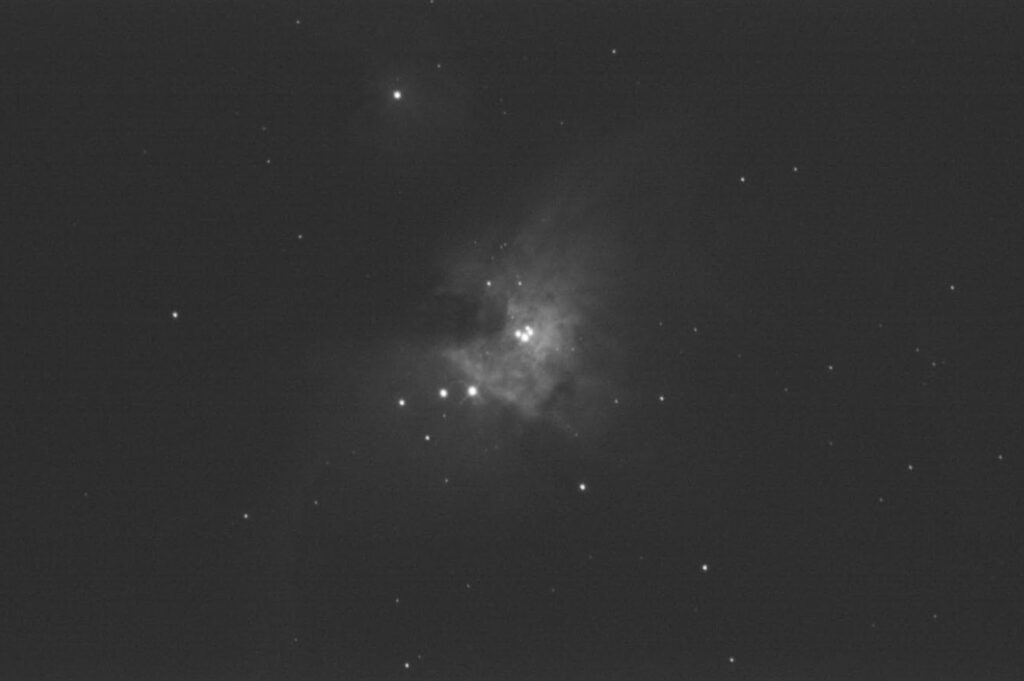
This was more of a test to image the Trapezium than the nebula. All it took was a single 0.5sec exposure.
Despite the sensitivity of the camera and the short exposure so as not to blow out the stars, It is surprising how little you can make out with such a wide FOV. Looking back at a visual observation back in December of 2012 using a TMB 4mm Monocentric eyepiece, I was able to make out considerably more detail visually.
My log for that date reads….
A magnificent sight as always. Looking at my logs the last time I observed M42 was on the 5, November of last year. And within 30 minutes too.
With a full moon 30 degrees to the East, I didn’t spend too much time looking at the nebulosity – which was still fully textured with lots of structure, but contrast was low. I wanted to get a closer look at the Trapezium and the stars contained within it, so spent most of the time observing this area.
The four principle stars that make up the Trapezium as I saw them are HR1895, Theta 1 Ori, BM Ori b and HR1896.
All were a whitish blue except BM Ori b which had a distinct warmer yellow orange hue.
In the centre of the Trapezium, the star chart shows the variable NSV 16458 at 8.4 mag. This was not observed. I find this surprising as BM Ori b is only slightly brighter at 7.9 mag. Even stranger is that BD -05 01315e which is located to the west of and in between a line drawn between BM Ori b and Theta 1 Ori, was easily seen at 11.6 mag.
Slightly more difficult to observe was BD -05 01315f an 11.0 mag component of HR1895 was just split-able with averted vision and that is if you can decide that you are not confusing it with the diffraction spike pattern of the principle component.
All this took place through the 10mm Plossl and on occasion the 4mm TMB monocentric.
Total integration 0.5 sec